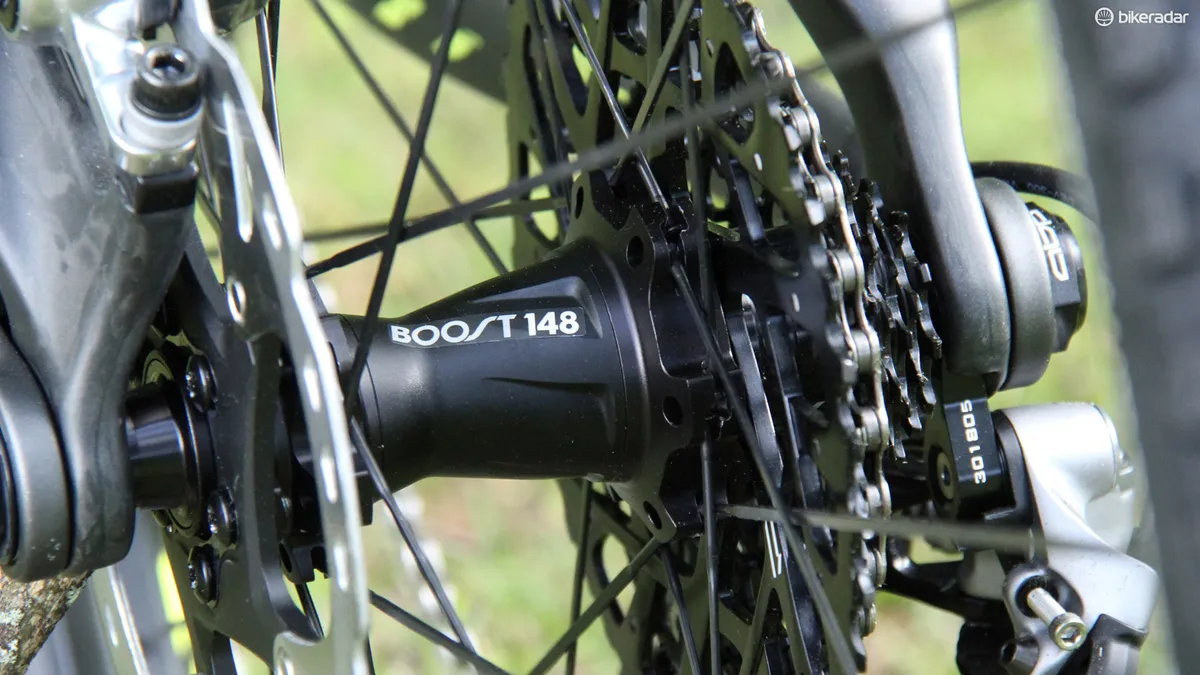Just when it seemed like we were experiencing a lull in frame fitment changes, two heavy hitters decide to rock the boat. Trek in conjunction with component manufacturer SRAM has developed a new rear axle standard, which the companies claim will make 29er wheels as stiff as their 27.5in counterparts and give frame designers a bit more freedom when it comes to tire clearance, chainstay length and chainring clearance.
“Boost 148,” which in non-marketing speak measures out to 148x12mm, is targeted at 29ers, with the primary goal being increased wheel stiffness via an increase in the distance between hub flanges. Increasing the width of the base of the triangle made by the spokes and flanges of the hub shell increases lateral stiffness.
While high-end carbon rims are a surefire way to build a rock-solid 29er wheelset, they are also quite costly. By increasing the axle spacing, riders on a budget can reap the stiffness benefits of high-end carbon hoops in alloy wheelsets at reasonable price points.
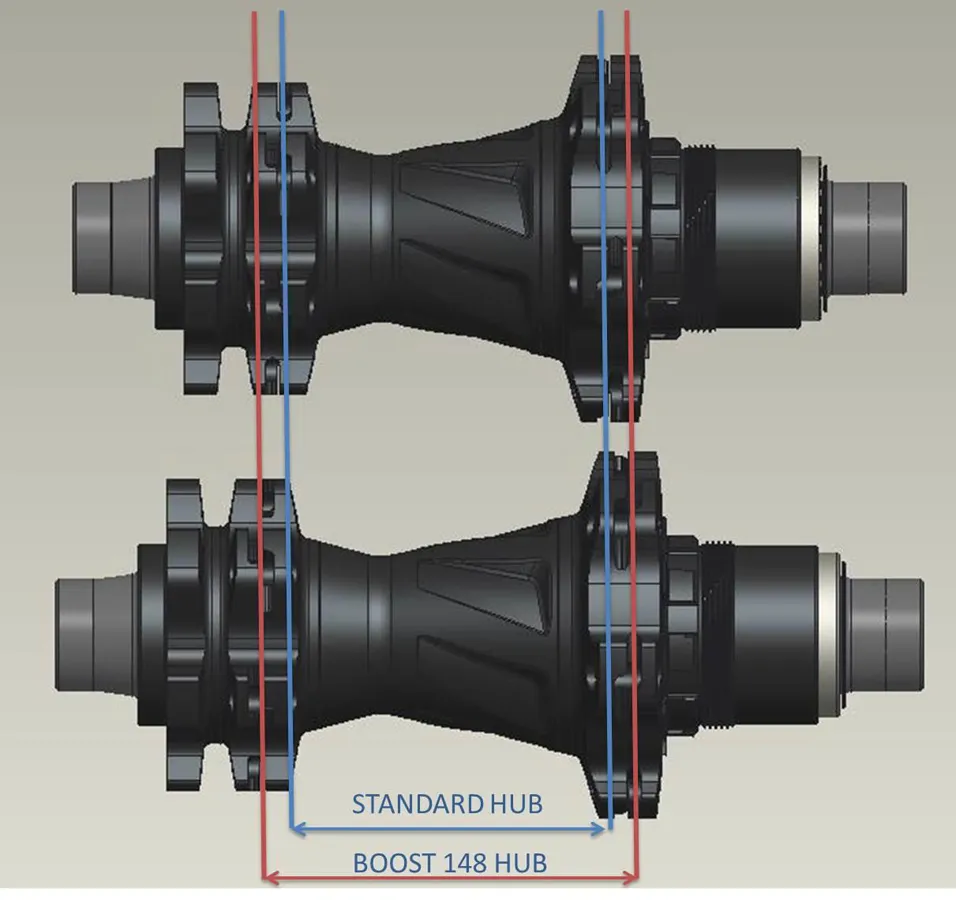
According to Trek and SRAM, this small increase in width results in significant gains to rear wheel stiffness — comparable to a 27.5in mountain bike wheel
How they went wide
This boost in width was achieved by designing a hub shell that is 6mm wider than SRAM’s standard 142x12mm rear hubs. It was relatively easy for SRAM to manufacture this wider hub shell. The hubs used on its Roam and Rise wheelsets use three-piece hub shells, so it was simply a matter of lengthening the central tube that is then bonded to the hub flanges.
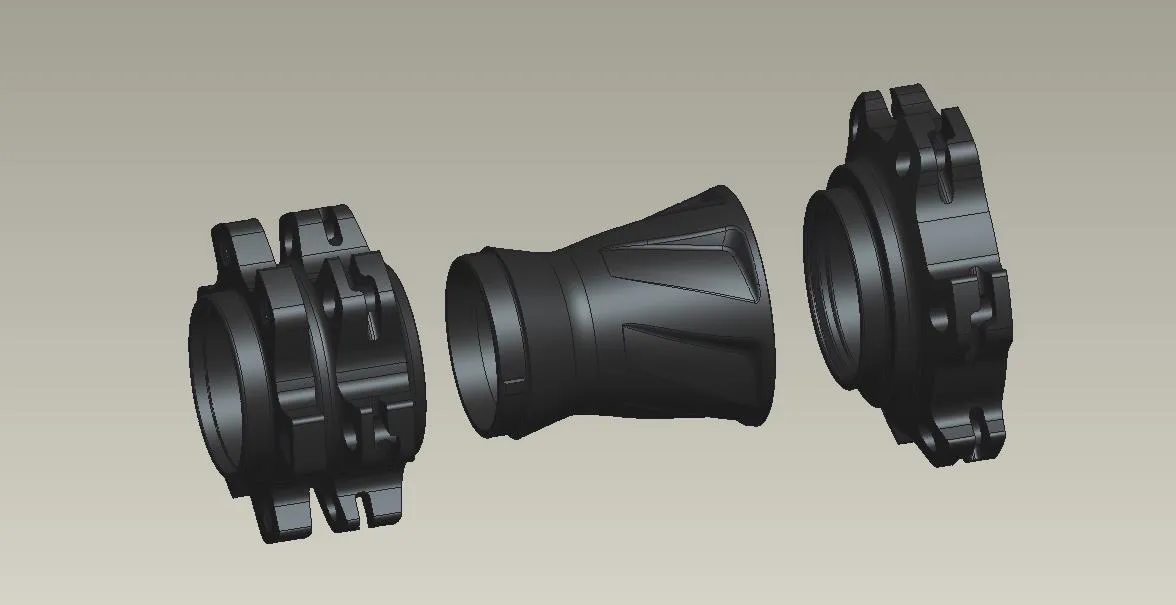
SRAM simply lengthened the central portion of its hubs to achieve the 6mm increase in width
Aside from a wider hubshell and longer axle, the rest of the hub remains the same. "Boosted" roam wheelsets uses the same freehub and endcaps, and retain SRAM’s Solo Spoke design, which uses a single length for all the spokes on a wheelset, making sourcing a replacement spoke an easy process.
Chainline considerations
In addition to widening the rear end, Boost 148 pushes the cassette 3mm outboard. SRAM developed a “Boost-specific” spider for its cranksets that repositions the X-Sync chainring by 3mm to maintain proper chain line.
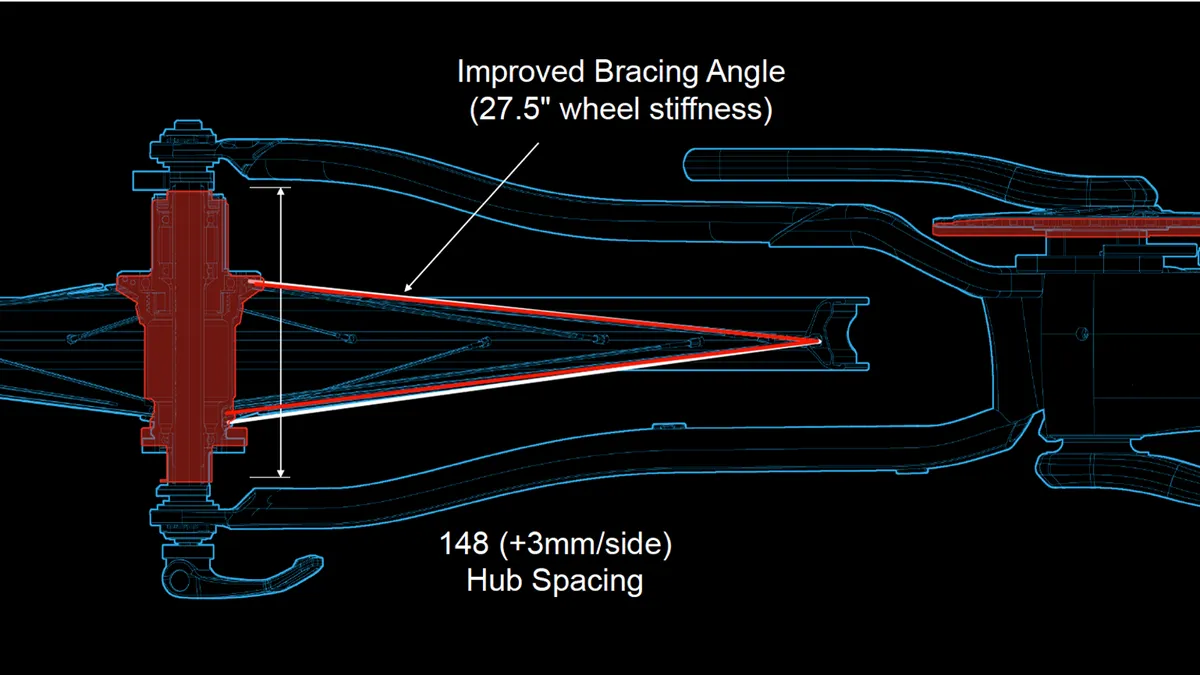
There are three key benefit to this approach: it does not affect the Q-factor; it doesn’t require a new bottom bracket standard; and the rider can easily source standard X-Sync, or even aftermarket, narrow / wide chainrings.
Beyond boosting stiffness
This 6mm increase in axle spacing and 3mm repositioning of the drivetrain provides frame designers with a bit more breathing room when developing modern 29er trail bikes. While 1x-specific frames remove the consternation of designing for a front derailleur, there’s still a lot that has to fit in a small amount of space.
Improved tire clearance, vis-à-vis the ability to widen the chainstays is one benefit of this move outward. It can also provides additional room for large chainrings. The maximum chainring size on the burgeoning crop of 1x-specific 29ers is constrained by the desire to have short chainstays and as much tire clearance as possible. While 1x-specific frames remove the consternation of designing for a front derailleur, there’s still a lot that has to fit in a small amount of space.
“One-by drivetrains can actually bring a larger chainring closer to the frame,” noted Trek mountain bike product manager John Riley.
While 30-34t chainrings provide plenty of top-end gearing for most weekend warriors, many of Trek’s professional enduro racers opt to turn over 36-38t chainrings.
What about 150mm hub spacing?
You may be asking yourself, “Why not go to 150mm? That’s an existing standard that’s been around for years.” The answer, according to SRAM, is that 150mm hubs actually measure 157mm. This much of a chance would require an increase in Q-factor, making it a non-starter for Trek.
At least anyone can do it
While SRAM and Trek worked together to develop the 148x12mm axle standard, it is not proprietary. Other bicycle companies are free to employ this design in their own frames and other component manufacturers are already tooling up to develop their own 148x12 hubs and “boosted” cranksets.
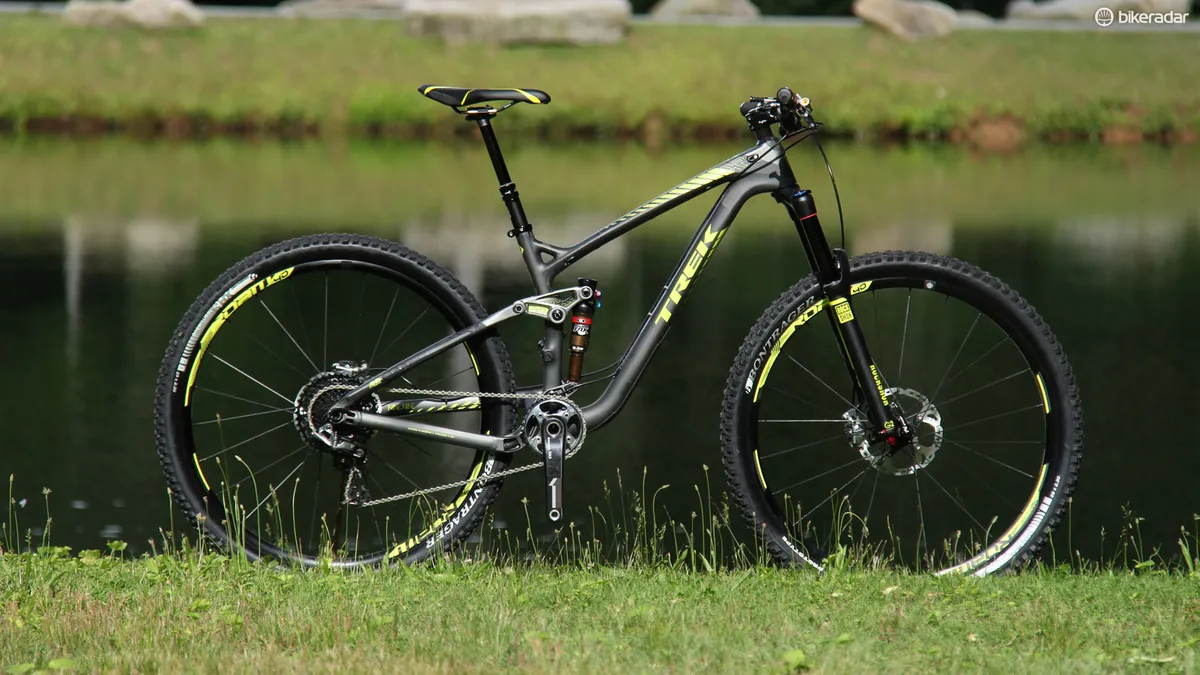
Trek will be using the Boost 148 spacing on its 2105 Remedy models, including the new carbon Remedy 9.9 and 9.8 models
What do you think? Are the claimed benefits of Boost 148 worth the introduction of a new hub standard? Sound off in the comments section below.
